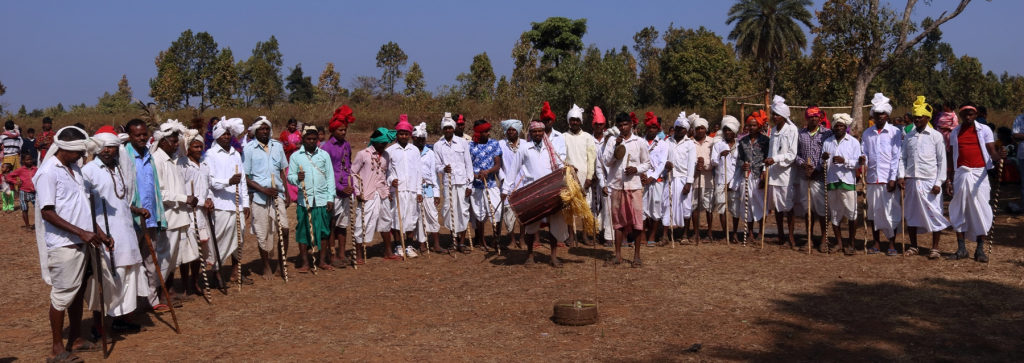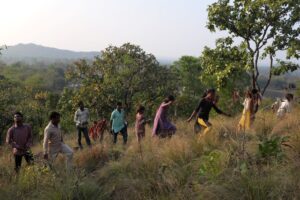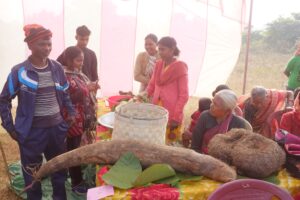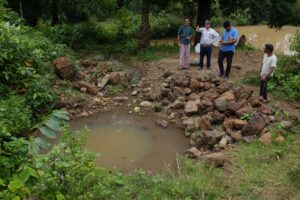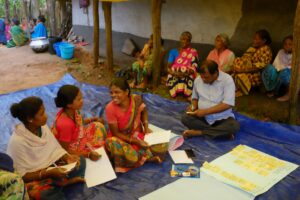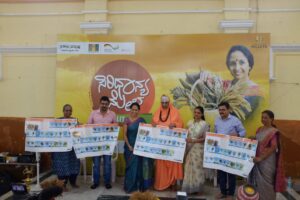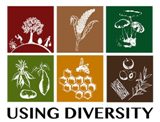On the 4th of February 2019 Soumik Banerjee (UD Network Partner) and Surja Pahari (UD Fellow) together with members of the Paharia community of Sundar Pahari organised a Wild and Uncultivated Food Festival at Ghagri village in Sundar Pahari, Godda District, Jharkhand. The event celebrated the rich diversity of wild and uncultivated foods that continue to form an integral part of the diet of the Paharia community.
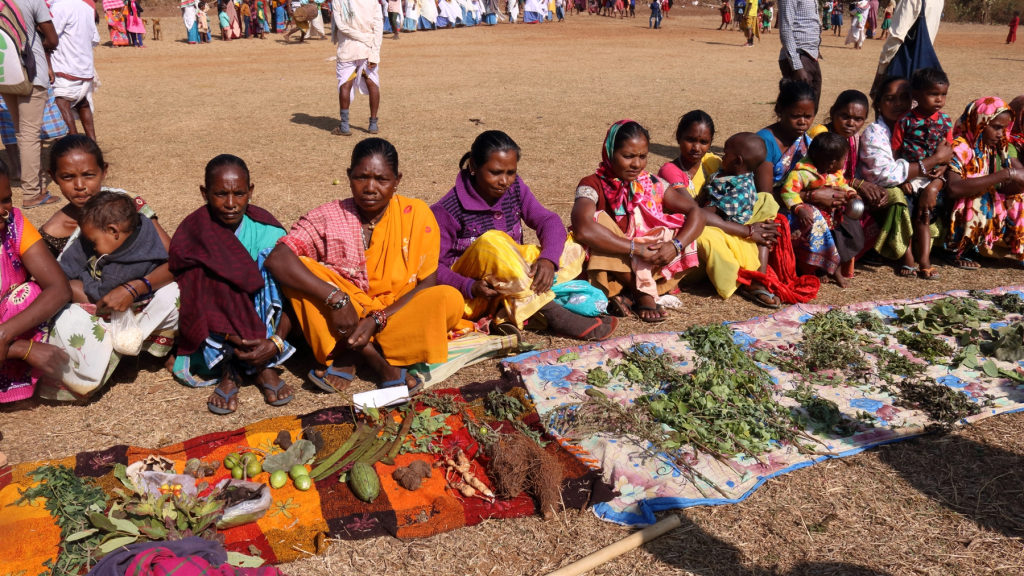
The Paharias of Sundar Pahari in Godda District of Jharhkand have a long history of practicing shifting cultivation on the forested hill slopes of their region. Their traditional agricultural practices involve:
- Jara which comprises of the cultivation of only barbatti (cowpea) in the first year of shifting cultivation.
- Kurwa – After one year of Jara the same plot is cleared and the cleared vegetation is burnt in heaps in preparation for Kurwa. Kurwa involves the cultivation of a number of crops like under Kurva are Makai, arhar, bajra, sutri and barbatti. After Kurva the land is left fallow for the re-growth of vegetation and trees. While the fallow period varies, on average it tends to be 4-5 years. However, villagers observed that the fallow period has been steadily declining.
The fallow period is also of vital importance and the villagers forest fallows are a source of a variety of wild food which include a numerous wild leafy vegetables, fruits, flowers, seeds, tubers and mushrooms.
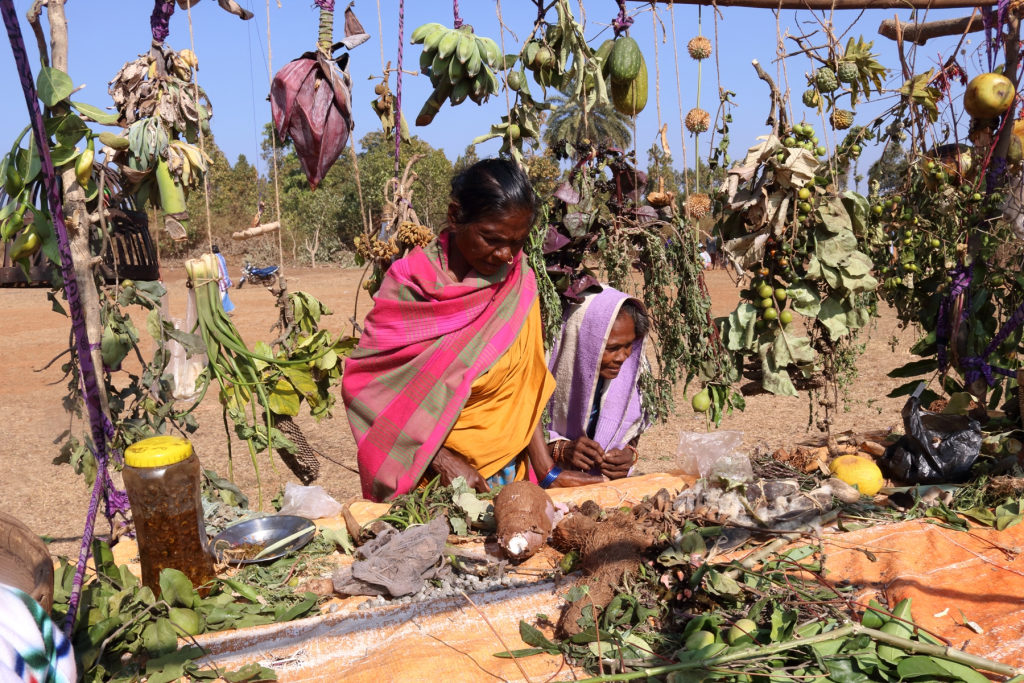
Fourteen villages participated in the festival bringing with them a rich variety of wild foods from their areas for display. The villages represented in the exhibition were:
- Telo
- Chamdade
- Nado Para
- Pertara
- Tatakpara
- Manspara
- Ghagri
- Gadgama
- Charchari
- Bada Chamer
- Tasgama
- Bada Palma
- Chota Palma
- Cheo
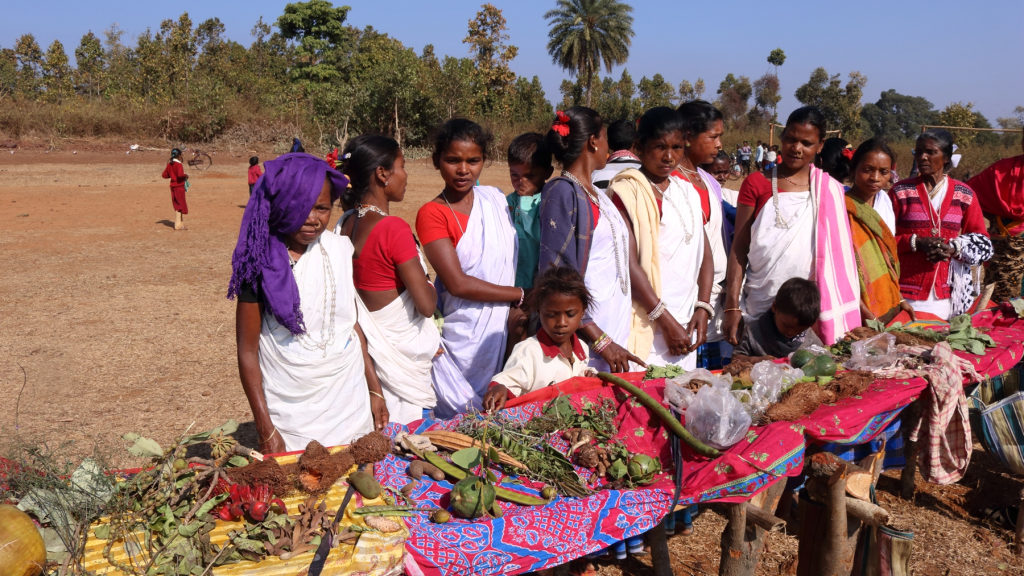
The different uncultivated foods on display were as follows:
- Wild Leafy vegetables – Komo gassi, pakri gassi, badreo gassi, berbayo gassi, aradeo gassi, chilo gassi, buchi gassi, sanjori gassi, batur gassi, achadro gassi, kisadro gassi, adro gassi, kondi gassi, paranga gassi, Makri/Tisgo gassi, Jolo gassi, Dab gassi, Kongte gassi, Marharni gassi, Usukendodu gassi, Makatti gassi, Susni sage, sunsuni sage,
- Flowers – Muruk pupdu, Jiruli pup, Kachna pup, bohra pup, Simri pupdu / Semul, Dawe pup, Mahua
- Fruits – Errange/Awra/Amla, Dumri, Ilkurdu/Ber, Aani, Behra, Gambari, Erote, Otta/Bel, Kend/Telo/Tendu, Pusre/Pusra/ Kusum, Piare/Piara/Char, Kanda, Jaril kurdu, Pindara, Tisro Chakjo, Mahua/Kochra, Ambara
- Tubers
- Uncultivated – Talko alli, Ekjo alli, Eso alli, Churka alli, Chalange alli, Tigo Churke alli, Enda alli, Nappe alli, Singla alli, Ehalli, Chamia alli, Murk alli, Simri alli
- Cultivated – Gumo alli, Jatta alli, Ber alli, Pandgo alli, Simri alli, Kesor alli.
- Mushrooms (dried) – Kutapura, Durga osdu, Chatti/Takna osdu, Telo kutti osdu, Gobro osdu
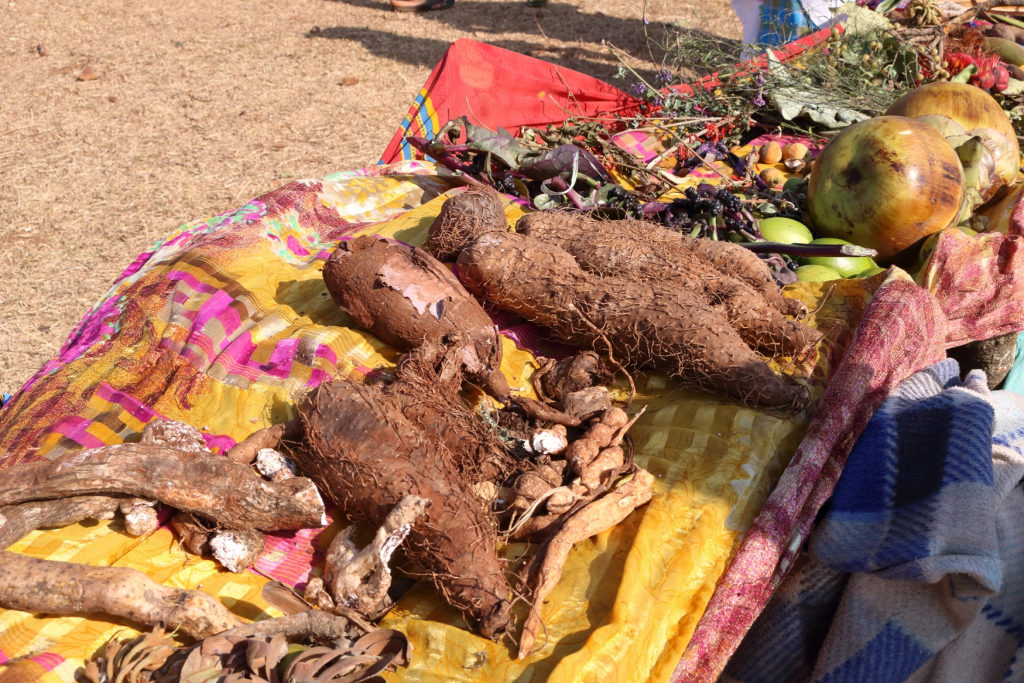
The festival also involved traditional Paharia dance performances which included –
- Bodda (snake) Nalle (Naach/dance) – This is a traditional Paharia dance preformed when celebrating harvest festivals like Kosre Pije and Gangi (Maize) Pije usually in October and November. They dancers use batons with snake patterns emblazoned on them. This dance was performed by villagers from Ghagri and Bada Palma.
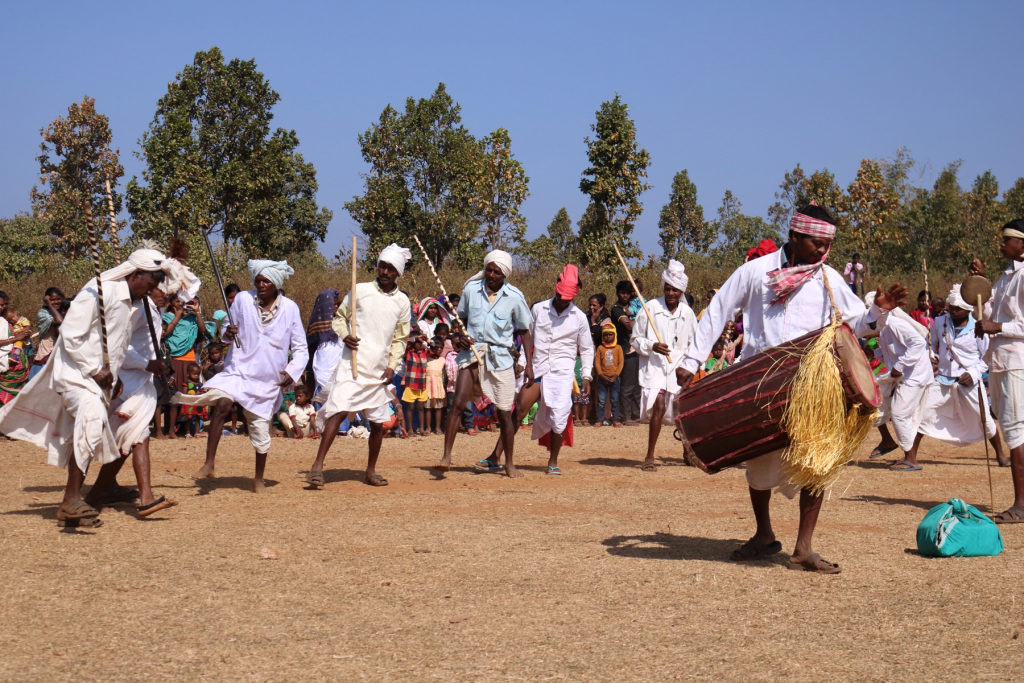
- Dandli / Bhoj Nadin Nalle – This is a Paharia dance performed during funeral rites carried out 40 days after a death in the village. A man dressed in white with a baton leads while men and women follow behind him and move in a circle accompanied by men playing dholaks (a small two headed drum). This dance was performed by the villagers of Gargamma.
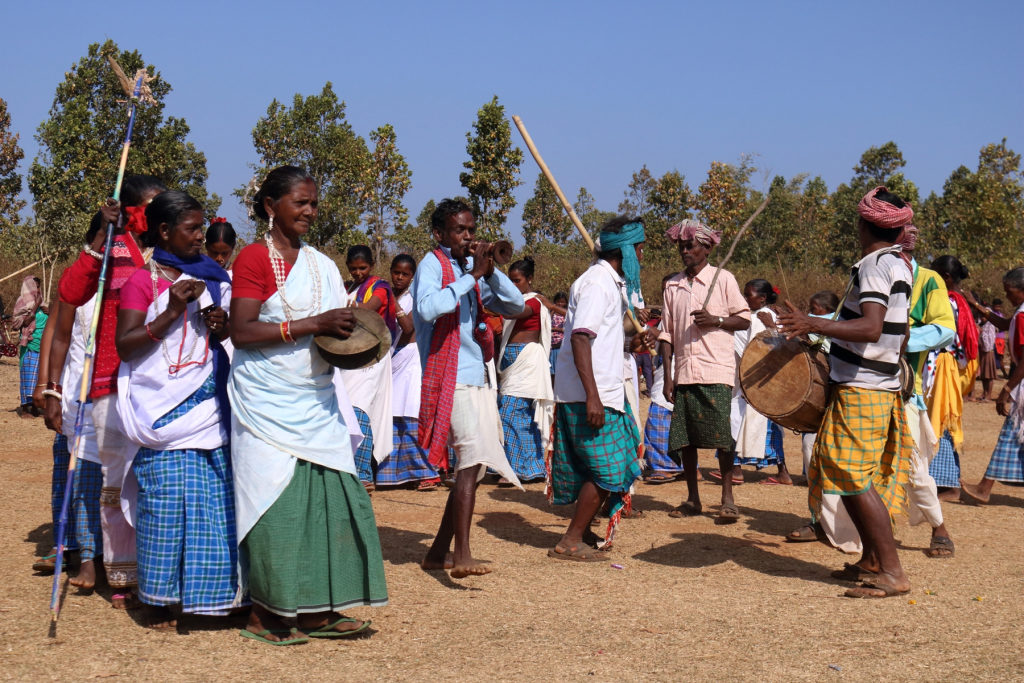
- Barto Nalle – This dance is also performed at the time of Bhoj with women dancing to the tune of traditional instruments played by the men. This dance was performed by the villagers of Cheo.
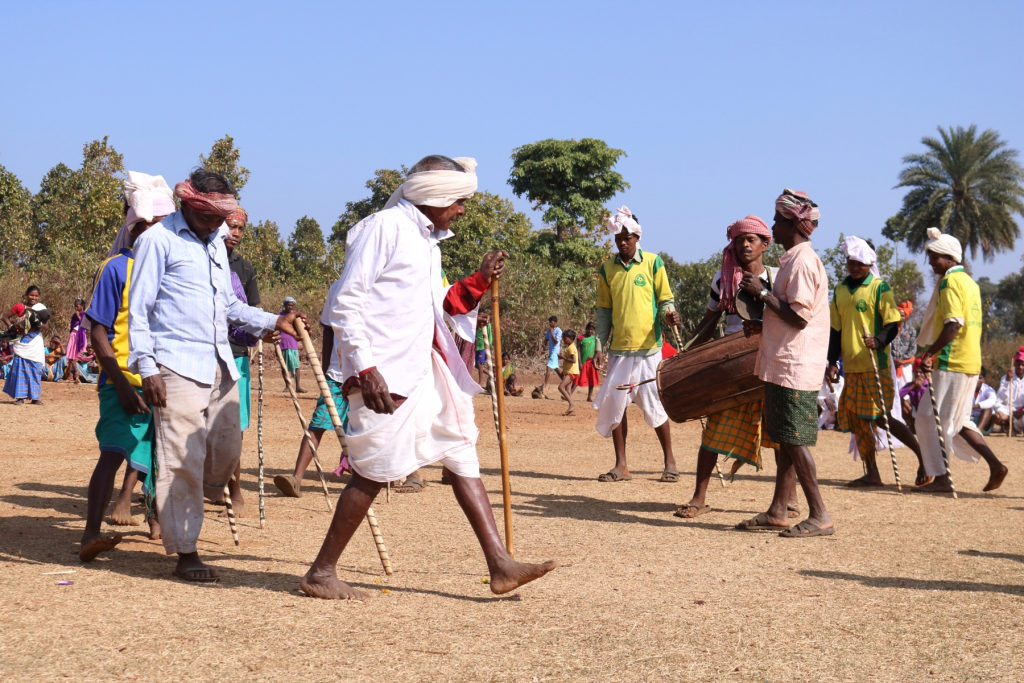
A number of prominent villagers and community leaders addressed the gathering stressing the importance of safeguarding traditional practices of the Paharias and protecting and managing the regions rich forest resources. The speakers included – Rami Paharin from Ghagri, Adiya Paharia from Bada Palma, Basanti Paharin from Cheo and Jamuna Paharia. Rami Pahari a respected village elder from Ghagri described how she has been witness to three generations of Paharias. She pointed out that earlier Makka (Maize) was the staple for Paharias but today this is changing to rice from the outside which she feels is making the current generation weak. She said that the dances performed at the festival were their old traditional dances which were performed regularly when she was young. She also shared that earlier they used to consume a lot of different tubers but the younger generation is too lazy to go for tuber collection because of the intensive labour involved.
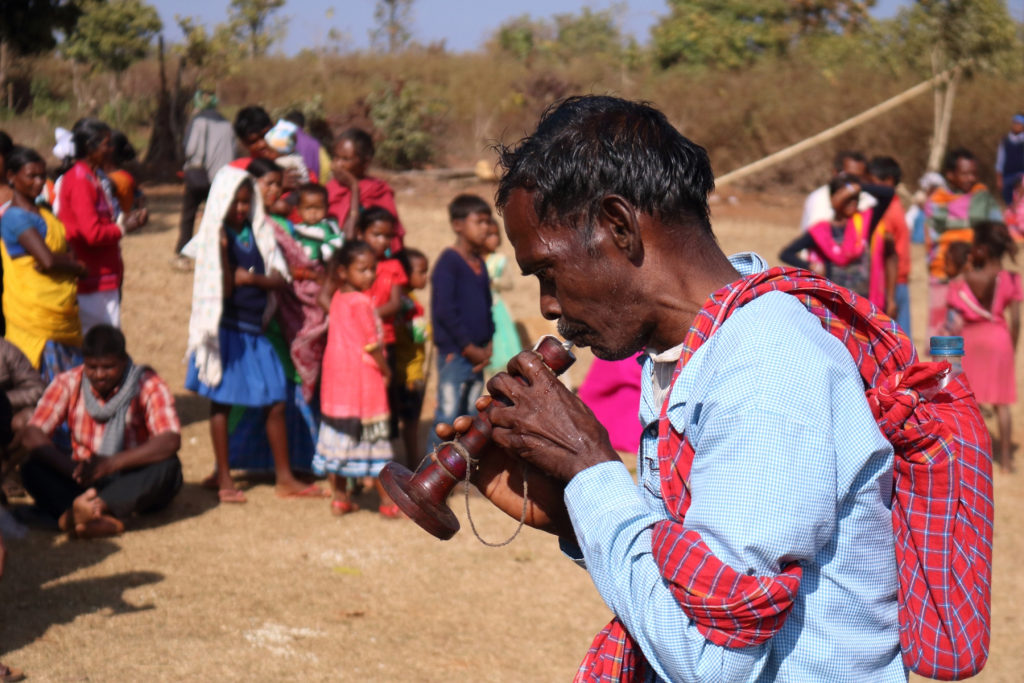
The program ended with all participants recognising the importance and benefits of the variety of wild and uncultivated foods on display. They encouraged the organisers to hold similar festivals on a regular basis at different venues in the region in order to build awareness about traditional foods and the importance of safeguarding the dietary diversity of the Paharias and protecting wild food plants and the forests of the region as a whole.

